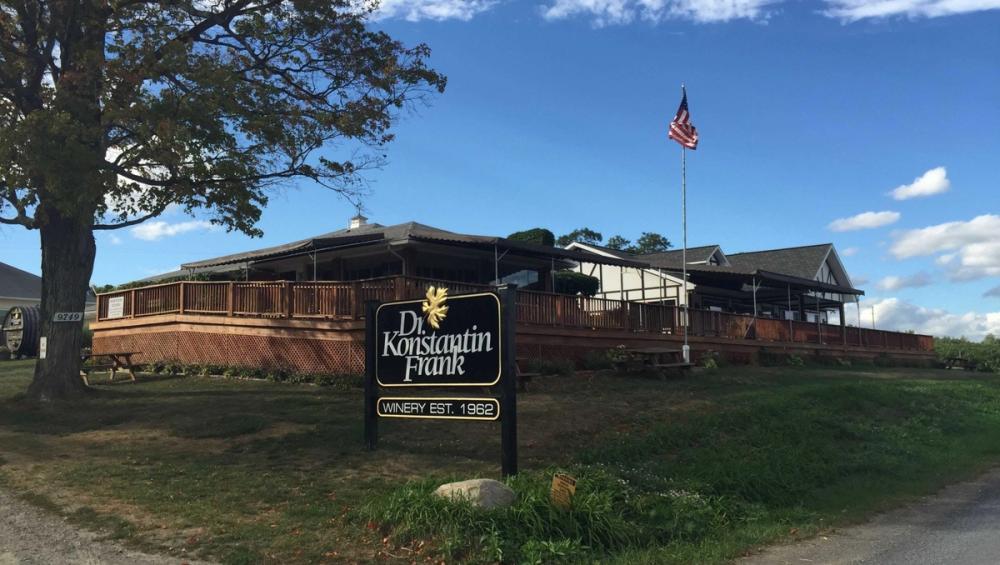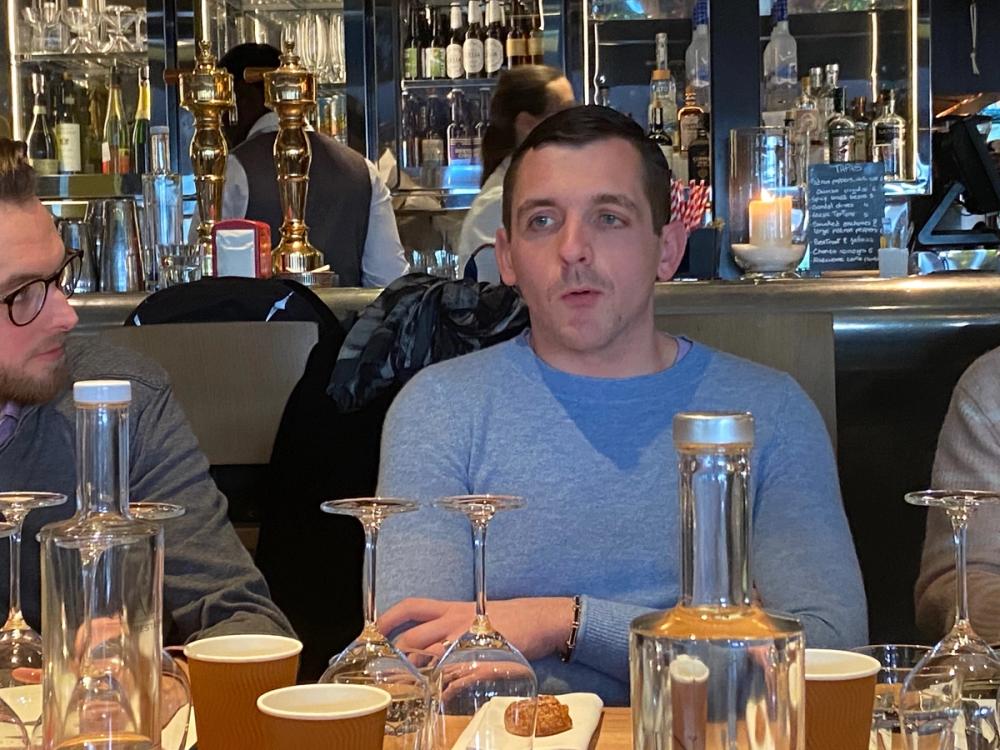If you are looking for high quality, diverse wines that offer great value up the pricing ladder then New York State has a lot to offer, says David Kermode.
Home to the city that never sleeps, the state of New York was napping for much of the last century, when it came to crafting wines that would tickle the taste buds of the world’s drinkers.
As California powered out of the Prohibition era, followed by Oregon and Washington State, New York’s wine regions were left nursing a political hangover and the wine scene that slowly emerged seemed more concerned with providing infamously foxy native vitis labrusca, or idiosyncratic French hybrid varieties, that satisfied local markets but were eschewed elsewhere.
That the West Coast stole a march on the East, after the country’s ill-fated experiment with abstinence, was largely a legislative failure and was somewhat ironic, as New York had history on its side: a successful commercial wine industry was established in the late 18th century and the state boasts America’s oldest winery. Yet, it took an accomplished but penniless Ukrainian immigrant to change its direction and set the course towards international success.

Follow the sign to discover this fourth generation New York State winery
Dr Konstantin Frank was an established viticulturist from Odessa, looking for a new life for his family when he arrived in New York in 1951. He didn’t speak English, but did have a wealth of experience growing grapes against the odds. Arriving in the Finger Lakes, he was told it was much too cold for European varieties. Knowing better, he set about convincing his first employer, Charles Fournier, to plant vitis vinifera, before establishing his own eponymous winery less than a decade later.
“Konstantin was simply not satisfied with the quality of American grapes, or French hybrids, so he set out to prove the naysayers wrong. He was not afraid of our cool climate, but rather, he embraced it,” says Dr Frank’s great granddaughter, Meghan, who now runs the family winery with her father, Fred, nurturing 17 different varieties, ranging from Riesling to Rkatsiteli.
Dr Frank’s pioneering work did not go unnoticed and towards the end of the twentieth century, vitis vinifera was well established in the Finger Lakes, albeit in a viticultural patchwork with labrusca and hybrid vines, much of which exists to this day.
In all, New York State has 11 AVAs (American Viticultural Areas), encompassing 471 wineries across seven wine regions, of which only two are really significant for vinifera varieties: the Finger Lakes, in the rural north-west, and the much smaller Long Island, where the first vines were planted less than 50 years ago.
The Finger Lakes AVA

The unique conditions of the Finger Lakes are ideal for grape growing
From the window of a plane, approaching Syracuse airport, the Finger Lakes appear aptly named, as they resemble gnarled talons glistening in the sunlight as they slice through the verdant landscape. There are 11 lakes in all, but wine production is centred on just three – Seneca, the deepest at around 180 metres, Cayuga, at 130, and Keuka at around 60 metres deep. Both Seneca and Cayuga are sub-AVAs and there are plans to create similar for Keuka. The lakes were formed by Ice Age glacial activity and the surrounding soils are rich in shale, with some limestone. A misconception persists that it is difficult to ripen grapes in the region, but the reality is a tale of contrasting conditions: the warm summer is relatively benign, while in winter the vines fight for survival, with temperatures sometimes below minus twenty degrees celsius.
On my Food FM Drinking Hour podcast, the winemaker at Red Newt Cellars, Kelby Russell, explains that the lakes play a critical role: “From an existential level, the lakes provide enough warmth during the winter on the slopes to protect the vines and to keep the buds alive … then they stay cold in the spring, so the late bud break means that we don’t, knock on wood, have to worry too much about spring frost, (then) in turn, the lakes keep things cool during the summer, maintaining the flow of air to help us avoid disease pressure and, in the fall (autumn), extending the ripening window.”

Kelly Russell of Red Newt Cellars says the lakes have a huge role to play in the winemaking in New York State
Perversely, though it has a long history of wine production, The Finger Lakes is also a region in transition, with around a third of its grapes still non-vinifera. The global fashion for lighter wines has driven demand for its cooler-climate signature, with European varieties slowly but steadily replacing traditional non-vinifera grapes.
The Finger Lakes is celebrated for its Riesling – the influence of German pioneers, such as Hermann J Weimer, is evident in the style being produced – whilst Cabernet Franc is increasingly winning acclaim, for crunchy, fresh wines to rival the Loire’s finest. To a lesser extent, Chardonnay and Pinot Noir are also attracting attention while also playing a role in the emergence of some serious Traditional Method sparkling wines that yield great promise.
Unlike the West Coast, The Finger Lakes does not boast much international investment – yet – but, rather, has an appealing abundance of family wineries, thanks in large part to the Farm Winery Act of 1976. The legislation – resulting from a crisis caused by a grape surplus that led corporate producers to renege on their buying commitments – slashed the previously prohibitive cost of a winery licence, leading to the grower-focused landscape that exists today.
Long Island AVA

Long – and very wide – Island is surrounded on three sides by the Atlantic Ocean
Just a couple of hours trundle by train from New York City, Long Island’s wineries offer a bucolic contrast with the madness and mayhem of Manhattan. Surrounded on three sides by the Atlantic Ocean, the gentle maritime climate offers a clue to the character of the fresh, breezy wines.
Though small, with a total of 82 wineries, Long Island’s AVA has two sub-zones: North Fork and The Hamptons. The former is more rural, while in the latter, the vines abut millionaire mansions. Long Island is characterised by its passionate, boutique producers who ensure the region punches above its size.
The first vines were planted on Long Island in 1973 and it is now celebrated for its Bordeaux blends and Chardonnay, with a legion of domestic fans and some signs of international acclaim. Though the varieties are similar, the contrast with wines produced on the other side of the States is pronounced, with the style closer to Bordeaux or Burgundy than Napa or Carneros.
Start spreading the news
Though New York has been playing post-Prohibition catch up over the last century, it finds itself well positioned for the zeitgeist, with the right vinifera varieties for fresh, taut, mineral-driven wines, a loyal fan base, room for expansion (in the Finger Lakes at least), a reasonably ready supply of water, no wild fires, and solid foundations to withstand the pressures of global warming.
The wines may still linger in the shadow of their top dollar West Coast cousins and are yet to take the international competitions by storm, but most offer excellent value, high quality and also the intangible lustre of something new to those yet to sample their signature, cool-climate charm.
- You can enjoy a special edition of the Drinking Hour with David Kermode on Food FM, in partnership with the IWSC and The Buyer, with episode 52 dedicated to The Finger Lakes. Click here to listen.
- To find our more about the region go to the New York Wine & Grape Foundation website here.
- You can read and watch The Buyer’s debate between leading New York producers and top UK wine buyers in our Part 1 and Part 2 articles here.










































